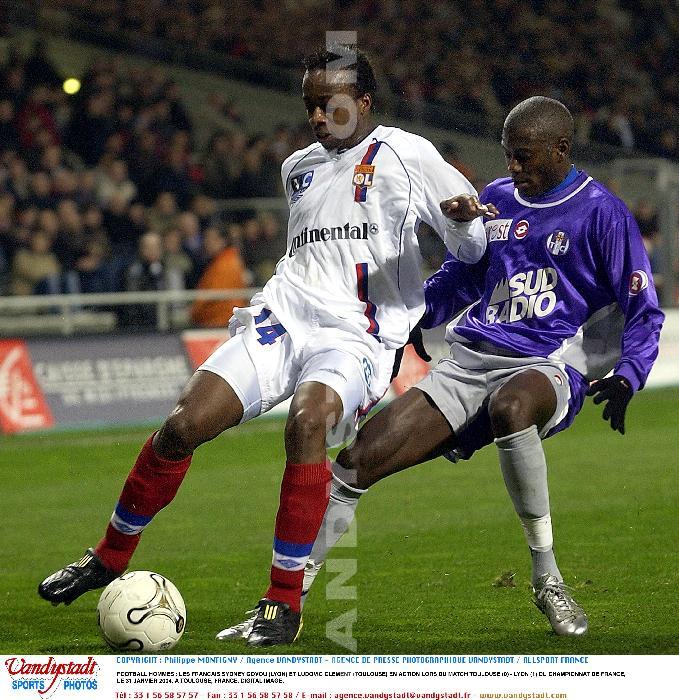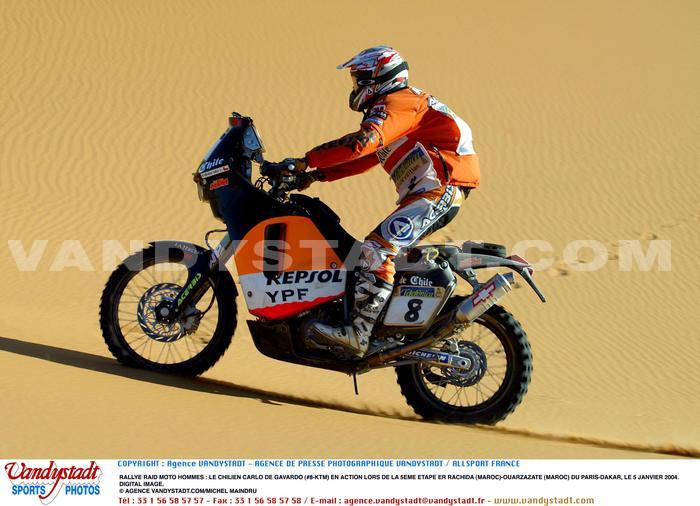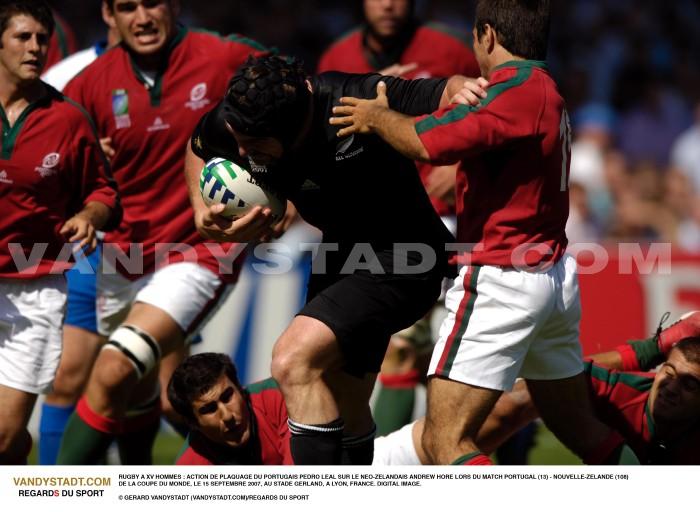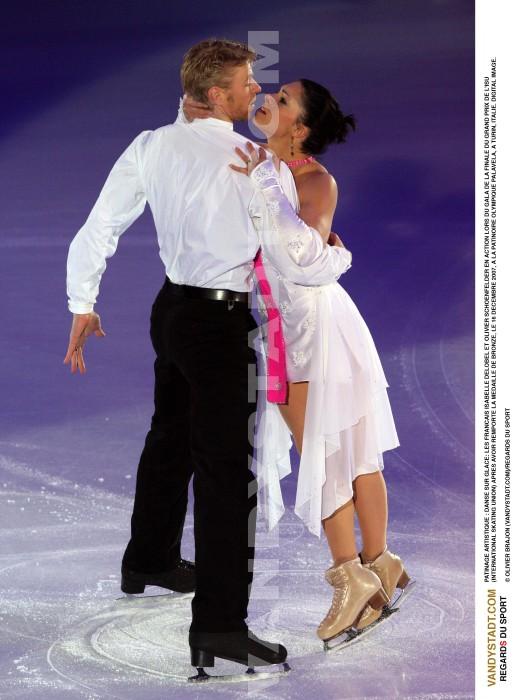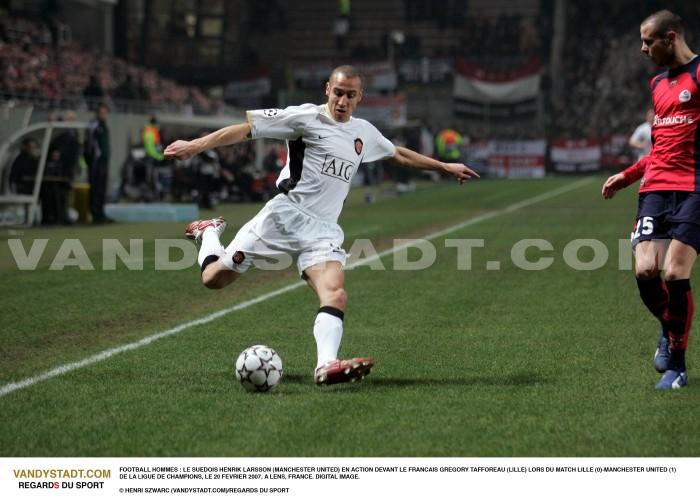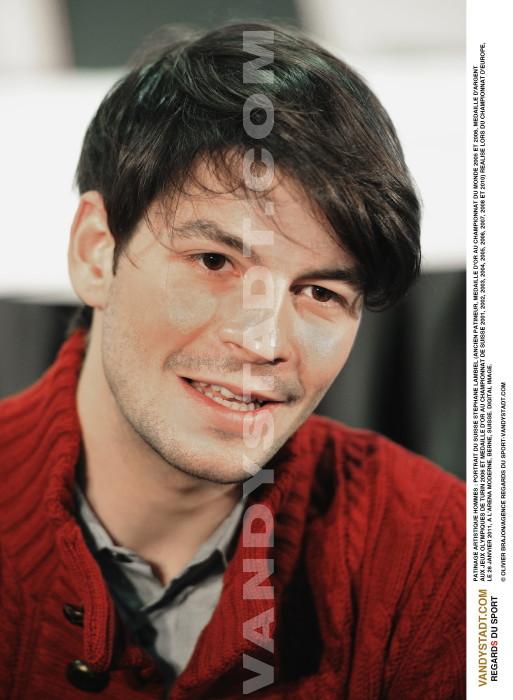Golf - Golf history
GOLF - Olympic Sports
![]()
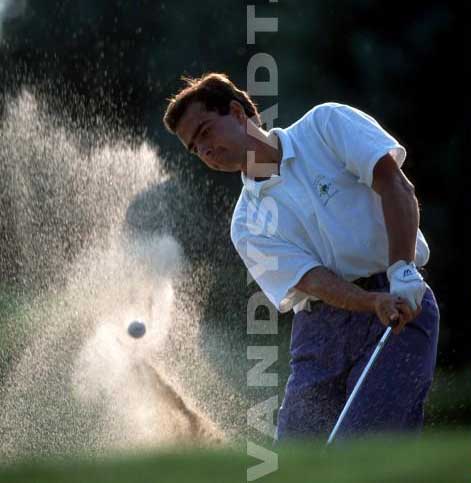
The game of golf is to hit a ball with a club to bring the starting hole of the flag of each of the 18 holes of a course, and this, in as few strokes as possible.
The word 'golf' is derived from the Scottish word 'golv', 'gowf' or 'Gouffé' which comes from a medieval term Dutchman 'kolf', meaning a club.
History
Several theories can explain the origins of the game of golf.
In ancient times, games were performed using a stick and a ball to a target (a pole, tree, etc. ..) as 'paganica', performed at the time of the Romans with a curved stick and a ball of feathers.
Golf is probably born around the 13th century in the Netherlands as 'kolf' means in Holland 'club'. The Dutchmen were engaged in a game on the ice (het 'kolven') It was to be sent from one point to another shot with a cane.
It may be that golf originated in a game played there more than five centuries, the Scottish shepherds hitting rocks with sticks calibrated.
Trade between the two countries enabled the development of roots of golf.
Of "other similar games were practiced around the world as the 'chôl'e (or Soul) in the 15th century in northern France, the game of' mail 'played in 16th century France, the' shinty 'in South America or the' ti-chi 'in Laos.
The particularity of golf over other games was the invention of the hole and it was the Scots who finally imposed the ball ended in the latter.
The golf course was developed primarily in Scotland in a form close to the game played today.
Since 1413, youth from St. Andrews took their taste and used canes and real bullets timber they shipped a long distance by several strokes.
Among the first references of course, include a window of mid-fourteenth century adorning the cathedral of Gloucester, representing a character ready to hit a ball through a 'club'.
In 1457, a Scottish royal decree of King James II banned the practice of 'Gouffé' pretext that it was detrimental to the training of archers.
The golf will know the real growth in 1744, when the civil authorities of Edinburgh recognize "Gentlemen Golfers of Leith (now shortly after" the Honorable Company of Edinburgh Golfers). On March 7, 1744, the first club listed first drafts rules to the number thirteen ( 'Articles and Laws in Playing Golf').
On May 14, 1754, 22 gentlemen and nobles of the Royal and Ancient Golf Club of St. Andrews' take on 13 sections and laws of the game of golf "(slightly changed since), its application was extended first to all England and the English colonies and the world.
During the 19th century, golf was considered a game reserved for the elitist bourgeoisie as balls and clubs were custom made. This production by hand was reserved for professionals who earned their living by being a teacher, player and caddy or competitions which were the subject of paris.
It is the Englishman who in 1856 founded the first golf course in French (and the world except Great Britain), one of Pau, then a few years later, one of Biarritz.
The World Amateur Golf Council was founded in 1958 at the initiative of the U.S. Golf Association and the Royal & Ancient in Washington where representatives from 35 countries were received at the White House by President Dwight Eisenhower in person. The same year the first world amateur championship was held in Scotland on the 'Old Course' at St. Andrews. Six years later, the first edition of World Championship Women's Amateur took place on the course of Saint Germain en Laye in France.
In 2003, the "World Amateur Golf Council 'changed name to International Golf Federation (IGF). It is based in New Jersey.
The European Golf Association was founded in Luxembourg in November 1937 and has 37 member nations. It organizes various European Championships and amateur competitions.
The Golf is once again an Olympic sport in 2016. Already this in 1900 and 1904 among men and women, sixty men and sixty women will play 72 holes stroke play (18 holes per day) at the Olympic Games in Rio de Janeiro.
.jpeg)
Golf in France
Diplomat, Pierre Deschamps
(1856-1925) was the key figure of French golf early 20th century. Excellent golfer, he won the silver medal ranking 'net' at the Paris Olympics in 1900.
It was originally the creation of the Paris Golf on the grounds of the old stud Boulie near Versailles. This is golf in Paris who fashioned the first translation rules, the orchestra first major competitions and laid the groundwork for an association of golf courses in France. On November 24, 1912, promulgated the official creation of the Union of Golf courses in France, converted in 1933 to become the current French Golf Federation. Pierre Deschamps
was the first president of the Union of Golf courses in France from 1912 to 1924.
- The French International Amateur Championship was created in 1904 whose first winner was Henry Beecher.
- The first Open of France in 1906, the oldest continental competition was won by Arnaud Massy
on the path of the ball. Three years later he became the first non-British to win the British Open at Hoylake in golf.
In France in 2008 include: 397 000 dismissed.
Golf is sport in the 7th number of licensees in France behind the bocce, basketball, equestrian, judo, tennis and football.
For the record, the French Golf Federation were about 20 000 graduates in 1970, 38 783 1980, 181 147 in 1990 and 291 754 in 2000.
Currently, 560 golf courses (of at least 9 holes) are listed in France: 142 for 9-hole golf courses, 324 golf 18 holes, 37 of 27 holes golf, 18 golf courses of 36 holes and 3 of 45 holes including golf National in Saint Quentin.
There are 379 golf courses open to all, 133 golf courses open to the public under conditions and 12 private golf courses.
For the record: 95 courses in 1960 to 109 courses in 1970 - 128 in 1980 to 200 in 1987 - 378 in 1990 to 511 in 2000
-15 Million players in Japan
-27 Million in the U.S.
-4 Million in Europe
Golf in Europe
| Country | Golfs | Players | H | F | Juniors |
| Total Europe | 6 560 | 4 270 156 | 2 782 271 | 1 059 465 | 428 420 |
| Austria | 152 | 95 833 | 52 165 | 33 447 | 10 221 |
| Belgium | 78 | 48 351 | 26 465 | 16 221 | 5 665 |
| Bulgaria | 3 | 125 | 112 | 8 | 5 |
| Croatia | 2 | 550 | 475 | 75 | -- |
| Cyprus | 9 | 1 400 | 1 000 | 300 | 100 |
| Czech Rep. | 69 | 29 133 | 17 091 | 7 285 | 4 757 |
| Denmark | 160 | 140 507 | 87 374 | 41 110 | 12 023 |
| England | 1 960 | 872 665 | 675 190 | 125 234 | 72 241 |
| Estonia | 6 | 1 387 | 854 | 321 | 212 |
| Finland | 117 | 116 473 | 68 932 | 32 071 | 15 470 |
| France | 559 | 378 275 | 239 961 | 100 602 | 37 712 |
| Germany | 677 | 527 427 | 285 193 | 186 044 | 56 190 |
| Greece | 6 | 1 339 | 865 | 176 | 298 |
| Hungary | 8 | 2 140 | 1 700 | 200 | 240 |
| Iceland | 61 | 15 865 | 10 601 | 3 460 | 1 804 |
| Ireland | 409 | 287 000 | 190 000 | 60 000 | 37 000 |
| Israel | 2 | 1 300 | 900 | 300 | 100 |
| Italy | 252 | 84 153 | 54 362 | 21 418 | 8 373 |
| Kazakhstan | 5 | 360 | 250 | 50 | 60 |
| Latvia | 3 | 700 | 400 | 100 | 200 |
| Lithuania | 1 | 265 | 165 | 50 | 50 |
| Luxembourg | 6 | 3 912 | 2 226 | 1 187 | 499 |
| Malta | 1 | 674 | 457 | 176 | 41 |
| Netherlands | 150 | 282 000 | 176 000 | 93 000 | 13 000 |
| Norway | 154 | 119 165 | 74 977 | 29 059 | 15 129 |
| Poland | 24 | 1 726 | 1 358 | 230 | 138 |
| Portugal | 77 | 13 835 | 9 813 | 2 803 | 1 219 |
| Romania | 4 | 590 | 410 | 80 | 100 |
| Russia | 7 | 5 150 | 2 600 | 1 550 | 1 000 |
| Scotland | 579 | 257 132 | 195 273 | 34 360 | 27 499 |
| Serbia | 1 | 300 | 200 | 50 | 50 |
| Slovakia | 6 | 3 016 | 1 864 | 693 | 459 |
| Slovenia | 8 | 7 309 | 4 677 | 2 080 | 552 |
| Spain | 303 | 310 822 | 204 930 | 93 684 | 12 208 |
| Sweden | 442 | 539 637 | 313 537 | 146 573 | 79 527 |
| Switzerland | 88 | 50 578 | 27 746 | ||
| Turkey | 13 | 5 050 | 3 615 | 882 | 553 |
| Wales | 158 | 64 012 | 48 533 | 7 400 | 8 079 |
Some important dates
1457: Royal Order of Scotland James II, prohibiting the practice of "gouf" or "gowf" pretext that night in training archers.
1502: King James IV authorizes again the game of golf. He began playing golf in Perth.
.jpeg)
1513: Catherine of Aragon, first wife of Henry VIII mentions in a letter to Cardinal Wolsey it "indulges in his favorite sport, golf.
1560: Mary, future Queen of Scotland, educated in France, introduced the game on the continent. In 1567, she was publicly reprimanded for playing golf at Seton few days after the murder of her husband, Lord Darnley.
1618: Permission of King James VI (later James I of England) to play Sunday.
Adoption of the first rules of golf by the first recognized association, the Gentlemen Golfers of Leith (Gentlemen Golfers of Leith), which later became the Honorable Company of Edinburgh Golfers (Honorable Company of Edinburgh Golfers).
1754: The 'Society of St. Andrews Golfers' was founded by 22 members, all the nobles of the kingdom of Fife. He became in 1834 the Royal & Ancient Golf Club under the patronage of King William IV.
1764: A golf course has 18 holes (However, in 1764, the golfers Decided to combine the first four holes into two, Which produced a round of 18 holes, though it was really 10 holes of which 8 were played twice)
1811: The first women's competition took place at Musselburgh in Scotland.
1829: Birth of the first club outside the British Isles, the Royal Calcutta, India.
1843: Allan Robertson
, considered the first professional, won the sum of 100 pounds, a small fortune at the time, in a challenge match.
1856: At Pau, France, opened the first golf course in mainland Europe.
1860: The first British Open takes place among eight players on a 12-hole Prestwick in Scotland, over three rounds. The Scotsman Willie Park as the winner.
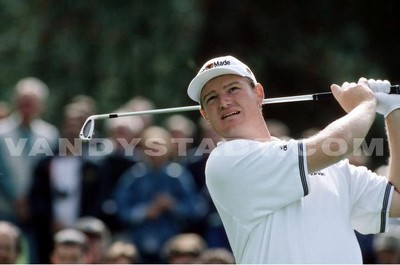
1867: First women's club, the Ladies Putting Club in St. Andrews.
1886: It launches in the U.S. in Yonkers, the state of New York, the first golf course on the American continent. It is a Scottish emigrant John Reid, who is the father. There were only 3 holes.
1873: Foundation of the Royal Montreal, the first golf club in North America.
1892: The first Australian club, the Royal Melbourne, is inaugurated.
1894: Founding of the U.S. Golf Association (USGA) U.S. Open and U.S. Amateur have launched the following year, organized at Newport GC. "The Golfer", the first golf magazine, is launched in New York.
1896: First public course in the United States located in the Bronx in New York (Van Cortlandt course)
1897: Creation of the Royal & Ancient Rules of Golf Committee.
1900: Golf is an Olympic sport, at Compiegne. Americans Charles Sands males and Margaret Abbott
women win the race.
1906: First edition of the Open de France , the race's oldest continent, golf Boulie near Versailles.
1911: The Golf Association of the United States (USGA) adopted the first national handicap system.
1919: One of the most beautiful courses in the world, the Pebble Beach golf links, opens in the Monterey Peninsula in California.
1930: Bobby Jones
completes a Grand Slam by winning in the same year, the amateur tournament in the United States, the U.S. Open, British Open and British Amateur tournament.
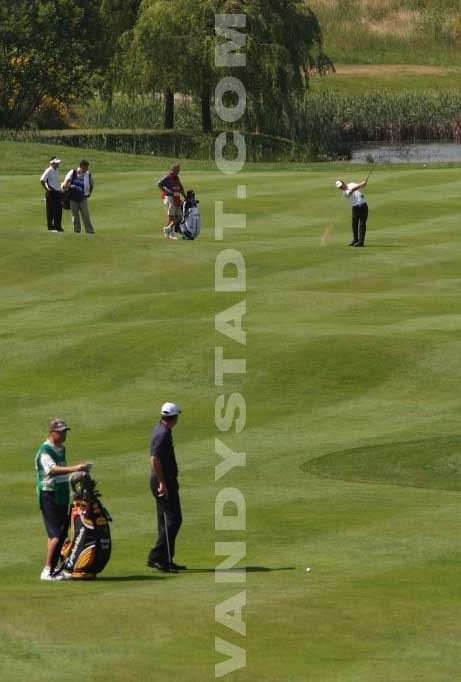
1934: After the British Open in 1860, the 1895 U.S. Open and U.S. PGA in 1916, the Masters ( " Bobby Jones
National Golf Course") was launched in Augusta, Georgia, is the newest four Grand Slam events.
1950: The Ladies PGA was founded by a committee of thirteen golfers.
1951: Ben Hogan
won the Masters, U.S. Open and British Open but did not qualify for the championship of the U.S. PGA. First publication of Golf Digest, famous American monthly.
1952: Adoption of the first uniform regulations by the World Association of Golf United States (USGA) and representatives of the Royal and Ancient Golf Club of St Andrews.
1958: World Golf Foundation Council which will hold two years later the first world championship amateur teams men won by Australia on the 'Old Course' at St Andrews
1968: Lee Trevino
is the first player to finish the 4 laps of the U.S. Open with results between 60 and 70 (for a total of 275, a record!) On the course at Oak Hill.
1978: Nancy Lopez
won nine tournaments on the LPGA Tour, including 5 consecutive, at the age of 21 years only.
1986: Jack Nicklaus
wins his sixth Masters at age 46, is his eighteenth major professional tournament.
1987: The Europeans won the first RYDER CUP on American soil (Muirfield Village course in Ohio).
1997: Tiger Woods
won the Masters, the first year of his accession to the ranks of professional at the age of 21, with 18 strokes under par. First black, youngest winner in history, he finished his rounds with twelve strokes ahead of his nearest rival.
2000: Tiger Woods
wins the British Open (with 19 strokes under par), the U.S. Open (with 15 strokes under par) and the U.S. PGA. By winning these tournaments, it not only establishes a new course record but also became the youngest winner in history to win the 4 major professional tournaments.
The PGAFrance, created in 1926 includes the professional golf players and teachers to provide training for teachers, improving the level of play of professional players as well as coordination with all actors of Golf.
Currently, the PGA France includes some 1 200 members.
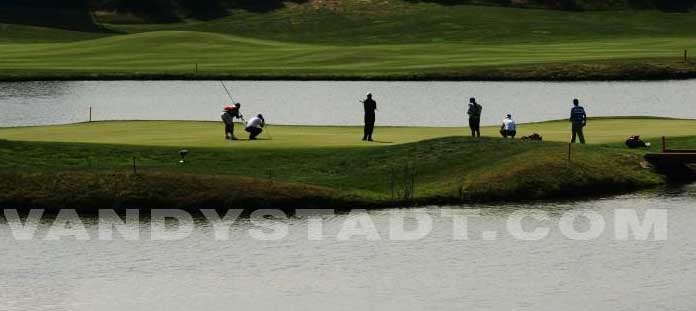
Competition
The game of golf is to hit a ball with a club to bring the starting hole of the flag of each of the 18 holes of a course, and this, in as few strokes as possible.
Rules and Principles
The rules of golf (34 today) are drafted and revised since May 14, 1754 by the Royal & Ancient Golf Club of St. Andrews. A development committee rules (The R & A Rules of Golf Committee) was founded in 1897 and since 1952 in agreement with the U.S. Golf Association, continues this mission. The last day (31st edition) on 1 January 2008. It is valid until 1 January 2012.
The motto of the Royal and Ancient
Play the ball where it is
Play the course as we feel
And if you can do neither the one nor the other, play with your senses,
But to succeed you must know the rules of golf.
There are over sixty defined terms which form the foundation on which the rules of play
The first rule of golf was written in 1744, it stipulated that:
"To putter, it was necessary that there is at least one length of a club"
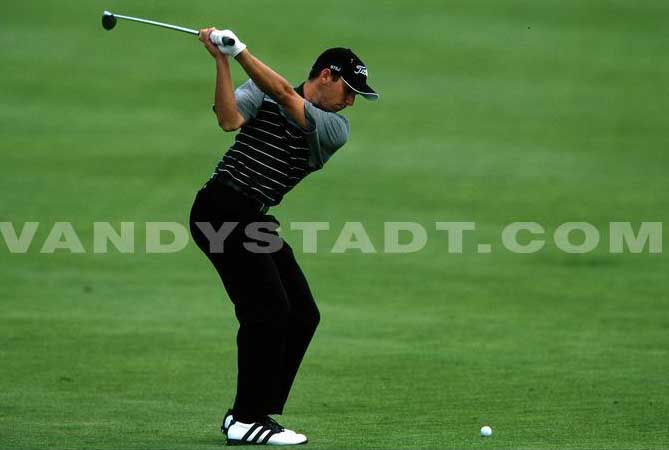
The game
Rule 1: the game
Rule 2: Match Play
Rule 3: Stroke Play
The clubs and the ball
Rule 4: clubs
Rule 5: the ball
Player Responsibilities
Rule 6: Player
Rule 7: TRAINING
Rule 8: Board. Indicating Line of Play
Rule 9: Information on strokes realized
Order of play
Rule 10: Order of play
Teeing
Rule 11: Departure area
Play ball
Rule 12: seek and identify the ball
Rule 13: play ball as it lies
Rule 14: hit the ball
Rule 15: substituted ball. Wrong ball
The green
Rule 16: green
Rule 17: the flag
Ball moved, deflected or stopped
Rule 18: Ball at rest DISPLACED
Rule 19: Ball in motion deflected or ADOPTED
Situations and clearance procedures
Rule 20: Meeting, dropper and place, playing a wrong place
Rule 21: cleaning the ball
Rule 22: Ball helping or disturbing the game
Rule 23: detritus
Rule 24: obstructions
Rule 25: Land in abnormal conditions, bad ball down and green
Rule 26: water hazards (including lateral)
Rule 27: Ball lost or out of bounds. Provisional ball
Rule 28: Ball Unplayable
Other forms of gambling
Rule 29: threesomes and foursomes
Rule 30: match play three balls, was the best ball and four-ball
Rule 31: stroke play four balls
Rule 32: Bogey competitions cons, and cons by stableford
Terminal
Rule 33: The committee
Rule 34: Challenges and Decisions
A complete course comprises 18 holes one after the other.
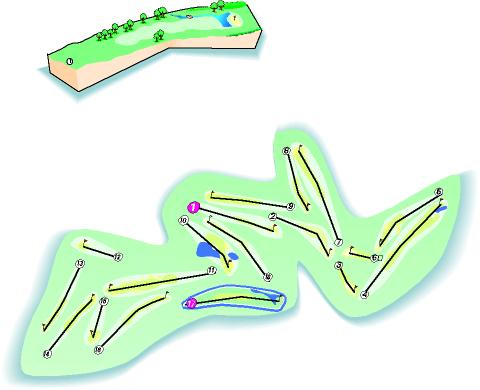
Each hole consists of:
- A departure: area 100 m², perfectly horizontal and grassed.
- A track (fairway): 30 to 50 m wide, grassed and regularly mowed to a height of 15 mm.
- A "green" grass surface to very thin and very open where the hole itself indicated by a flag planted in the center. The surface of the green between 300 and 700 m².
- Of obstacles that may be located along a hole, usually around the "green" and which are either pools, ponds, streams or sand barriers (bunkers).
The holes of golf
Each hole is between 130 and 530 m long and all 18 holes is, depending on the journey, between 5700 and 6500 m. The area required to implement a course of 18 holes is 40 to 60 hectares.
The hole has a diameter of 108 mm and a minimum depth of 100 mm. In its center is painted a flag indicator or removable.
The length of holes
- By 3: up to 228 meters (250 yards) for men and up to 183 meters (210 yards) for women.
- Par 4: 229 to 434 m inclusive (250 to 471 yards) for men and from 184 to 366 m inclusive (211 to 400 yards) for women.
- Par 5: 435 m and more (470 yards) for men and 367 m and more (401 yards) for women.
World Golf Hall of Fame (Hall of Fame Golf)
Founded in 1974 in Pinehurst by the PGA in the State of North Carolina, it is since 1998 in the "World Golf Village in Jacksonville, Florida and includes some 90 names of great players (men and women) who have contributed to the reputation golf. They are elected by an electoral college consisting of 371 international members. Among the remaining golfers admitted: Greg Norman
and Payne Stewart
in 2001, Bernhard Langer
, Tony Jacklin
, Tommy Bolt
, Ben Crenshaw
and Marlene Hagge in 2002, Julie Inkster and Annika Sörenstam in 2003, Tom Kite
and Isao Aoki
in 2004 by Karrie Webb
2005 (youngest golfer to enter), Curtis Strange
and Se Ri Pak in 2007, Craig Wood
and Denny Shute
in 2008.
The World Golf Village also has a museum of golf supported by many donors among which are: the Royal & Ancient, the Gulf of Augusta, the U.S. Golf Association and various professional tours (European Tour, Japanese, etc.. .).

It has undergone many changes since the old wooden ball used until 17th century. The feathery or 'feathers' succeeded him, and gutta percha and finally the rubber ball.
The wooden ball made by hand was used between the 15th and 17th centuries
The 'Feathers', the standard ball for more than three centuries, was invented in 1618. It was a ball made of goose feathers stuffed into a leather casing.
We owe the discovery of gutta-percha ball was a reverend named adam patersob of st andrews who invented it in 1848. It consisted of a milky liquid (boiled, cooled and hardened, then worked by hand to give it the shape of a ball) from a tree known in Malaysia, 'sapodilla', hard and elastic in his state natural. These bullets, easy to manufacture and repair underwent competitive industrial manufacturers of rubber as Dunlop who were interested in this market, killing artisans.
The ball composed of a jacket lacquered white one piece and a rubber core surrounded by elastic thread, was born in 1898. Developed by Coburn Haskell in partnership with Goodrich, the ball, the ancestor of modern bullets, was passed by all. In 1900, a john Gammeter filed a patent for the manufacture of golf balls in series allowing for mass production.
In 1906, Britain's William Taylor asked that he be granted the license of a patent on the cells of the envelope surface of the ball.
In 1972, Spalding began marketing the first ball with the synthetic envelope consisted of two parts and having a ball solid nucleus, the Top-Flite.
In the 20th century, its size and weight changed often. The first to standardize the format was the British Association of Golf in 1930 (diameter of 1.62 inches) and very soon the American Association of Golf fixed it at 1.68 inches.
It is ultimately the American standard that was elected in 1990 as the official standard of a golf ball:
- His weight does not exceed 45.93 g.
- Its surface is dimpled (approx. 342 cells) to stabilize the ball in flight.
- Its diameter must not be less than 42.67 mm (1.68 inches).
- The speed of the ball must not exceed 76.2 meters per second (250 feet). A tolerance of plus or minus 2% is allowed.
A ball is lost if it has not recovered after five minutes since the start of research.
250 km / h: the departure of a ball struck by a good player and that for the first 50 meters!
The Scot Allan Robertson (1815-1859), a native of St Andrews is considered one of the pioneers of professional golf. Unbeatable between 1840 and 1845), it was the first to achieve a score below 80 on the 'Old Course. He later became a manufacturer of balls and clubs, long exported around the world.
In golf, you must play the ball where it lies.
If it is unplayable, it can drop it (drop the arm extended at shoulder height) within two club lengths from where it rests, without approaching the hole, with a penalty stroke.
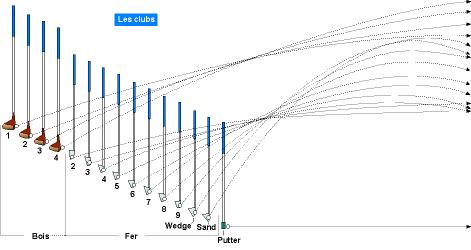
In the early origins of golf, players on the east coast of Scotland, made their clubs in the wood apple, beech or pear. The story says that the first set of clubs was commissioned by King James IV of Scotland 1502 and when he became King of England, he hired William Mayne as a master craftsman of royal clubs.
The clubs are numbered 1 to 11 corresponding to their openness in relation to the perpendicular to the ground. The higher the number the club is small, the opening is closed, and hence the distance is made larger.
There are three types of golf clubs recognized:
1. Iron
Iron is a club whose head, usually steel, normally has its rear relatively narrower than its opposite. They are numbered from 1 (closed face) to 9 (open face). They are used on any part of the golf course, because they each carry a different distance. The long irons are numbered from 1 to 4; chains with 5 to 7 irons short 8 to 9.
The wedge is an iron with a large opening allowing the ball to climb higher and more stable arrival
Among the wedges, pitching wedge (No. 10) is used for small strokes up to 120 meters and sand wedge (No. 11), invented by the great American golfer Gene Sarazen , to exit the bunkers.
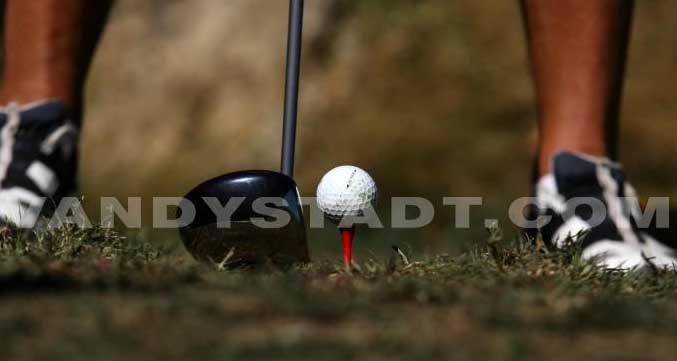
2. Wood
(Do not wear more than the name because they are now metal)
Wood is a club whose head, usually made of wood, plastic or light metal, has his face relatively wider than its rear part. They are used for long distance shots (as well as "long irons"). Woods are numbered from 1 to 5. Number one, the wood most powerful is the "driver" used primarily for departure.
- In 1959, Karsten Solheim invented the putter (first heel-toe balanced putter) called 'ping' so named because of the noise he was in contact with the ball)
- In 1979, Taylor-Made was the first manufacturer to introduce the game metal timber.
- The 'Great Big Bertha', a huge driver, the club's best-selling world in the history of golf was introduced by Callaway in the early 1990s.
3. The putter
A putter is a club right wall, originally designed to be used exclusively on the green with the aim of pushing the ball towards the hole on the green.
Number of clubs possible
Since 1938, the rules do not allow more than 14 clubs to play, allowing the player freedom to create his series. The numbering of the clubs also dates from this period.
In principle, a golf bag includes 8 irons, 3 wood and a putter. Often, players are replacing the wood with three iron three that seems more practical
The ten oldest golf courses in France
1856. Pau - 1887. Dinard - 1888. Biarritz - 1891. Cannes Mandelieu - 1895. Valescure St Raphael - 1897. Dieppe - 1899. Deauville - 1900. Aix-les-Bains - 1901. The Boulie and Bordeaux.
Golf de Cannes Mandelieu was created by the Grand Duke Michael Michailovitch, brother of Alexander III, Czar of Russia. Exiled in Cannes, he decided to form a corporation to create a course of prestige.
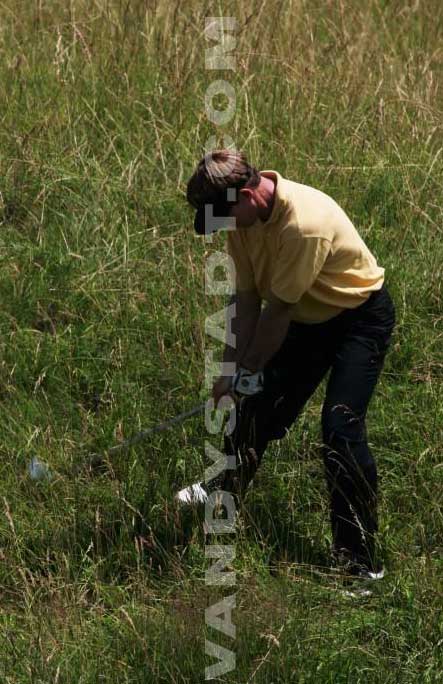
The duration
In the interest of all players must play the game without delaying No player shall play until the players who are above unattainable.
Caddy
According to legend, Queen of Scots, Mary Stuart (1542-1587), a pioneer of golf, never wore his clubs. During his stay in France, she played golf in the company of an elite corps of young French soldiers, the 'cadets'. Eelle was wearing his equipment by one of them. Once back in Scotland in 1561, the youngest name later became caddy.
A shopping cart with a professional player, carries bags of about 15 kg!
Formula competitions
There are two types of competition:
- Contest stroke (or Medal Play): This is a competition where they must take courses in the minimum of moves. The player who completes the course in the fewest strokes is the winner.
- Contest by holes (or Match Play): The competition consists of two opposing players or two sides. The game is played by holes. A hole is won by the player or the camp between his ball in the hole with fewer strokes and is shared if both players or sides have entered the ball into the hole in the same number of strokes. The game is won by the player or side that leads in a number of holes than the number of holes remaining to play.
Both competitions are played:
- Singles: each "competitor" is one;
- Against all other "competitors" if it is a stroke play competition;
- Against an opponent in the case of a competition by holes;
- Duplicated: each "camp" includes two "partners" who have teamed up to compete in a contest.
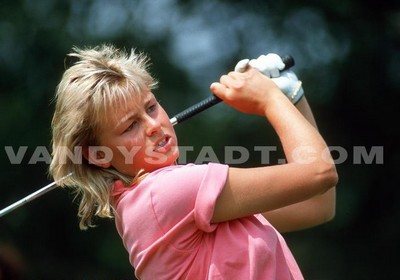
The forms of play for doubles:
- Foursome: the "camp" has a single ball that is hit alternately by each partner. The departure of the odd holes is played by one partner while the other is the departure of peers .- Greensome: the start of each hole, the two partners in a camp put a ball in each game, the 2nd time, they choose one of the bullets and play alternately until the end of the hole.
- 4 ball better ball both partners in a camp play every shot until the end of the hole. The lowest counts blows partner is counting the camp to the hole.
The "Skin Game" is to put into play on every hole of a fixed amount. A player who wins the hole wins the money put into play on this hole. In case of equality, this is in addition to the sum of the next hole and so on. Among fans of the skin game, often found: Jack Nicklaus , Ray Floyd, Hale Irwin , Arnold Palmer , Lee Trevino and also Annika Sörenstam, all contained on a ranking official 'the All-time list Skins'.
.jpeg)
Rules on the course
Except in special cases we shall see later, you must play your ball as it lies.
What a rubbish?
The "trash" are natural objects such as dead leaves, twigs, dead branches, manures, discharges of worms or insects and non-embedded stones in the soil.
Before playing the ball, you can remove all the debris that annoys you to fulfilling your shot. If during this cleaning, you move your ball, you should put in place initial and incur a penalty stroke and this, both in Medal Play Match Play.
But you can not improve the position of your ball or the area you need to run your movement by moving, bending or breaking anything growing in the soil such as tall grass, tree branches, etc..
Similarly you do not have the right to remove or smooth sand or loose soil surrounding your ball. If you're one of those mistakes you will be penalized:
- Stroke Play with 2 strokes,
- Partly by holes in the loss of the hole.
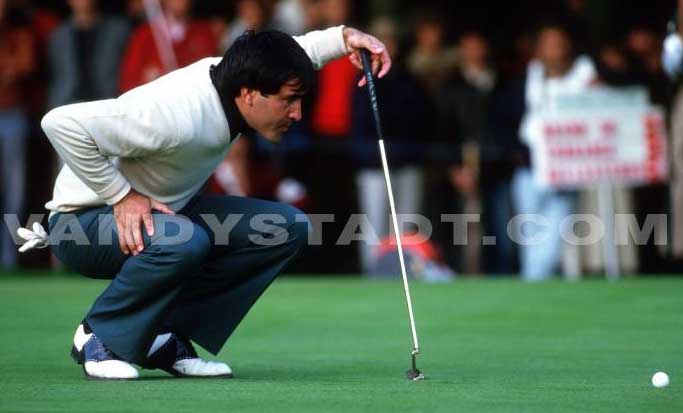
What happens if you enter the wrong ball?
Warning! Before playing, make sure it is your ball. In fact, if you play a ball other than yours, you will be penalized!
- Stroke Play with 2 shots and you need to replay your ball, every shot played the wrong ball being canceled
- Partly by holes in the loss of the hole.
What a ball unfit for play? What can be done in this case?
In verifying that this is your ball, you may get to see that it has become unfit to play for any reason (opened by the previous move, damaged by a fall on a stone cutting, etc.. ). You can, without penalty, replacing it with a new ball. To do this, you do the following:
- You will prevent your opponent for your or your competitor brand card
- You score your ball and will report to see your opponent or marker that is fit for the game
- You will reset your new ball at the spot where was your first ball.
From a hole you can always play another ball.
"The label" application that you hear about this change to your opponent.
Finally, if running a blow your ball breaks into pieces, you will need to replay the same place another ball without penalty.
What is a bullet in his pitch? What can be done in this case?
A ball must be played where it lies. There is one exception to this general rule: indeed, when the ball fell to the ground a hole and is pressed (that is to say in his "pitch"), you can raise it without penalty and the "dropper" as close as possible to where it was but not closer to the hole.
Warning! This is allowed only on the "fairway" (area mowed ras).
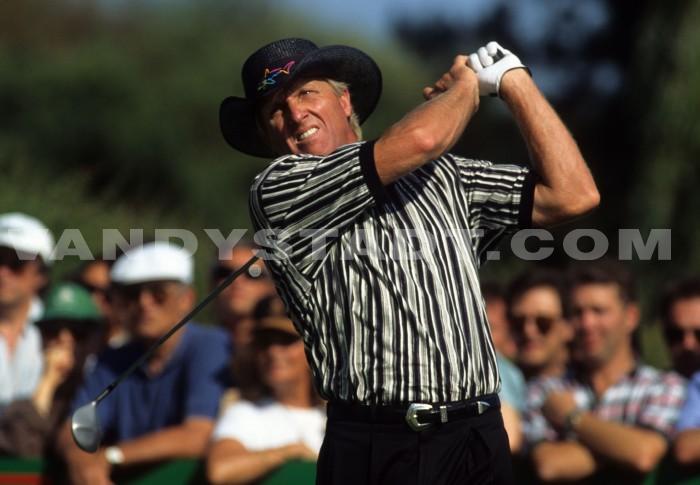
Ball dropper
It's how you can put a ball into play under certain rules.
To drop a ball you will operate as follows: you take the ball in your hand, stretch your arms horizontally and drop to the ground by standing in a location to be specified by the rules we shall see later ( in the previous "bullet in his pitch," we should drop it as close as possible to where it was).
If fall or be dropped after the ball hits you or touch your equipment, you must "redropper" without penalty. Similarly, if after having touched the ground, the ball traveling at more than 2 club lengths or stops closer to the hole where it was, you should place it, still without penalty, where it touched down last.
Ball out of bounds or lost
The golf course is not infinite. It is generally bounded by roads, properties, etc.. The limits of land are marked by fences, fences or sometimes simply by white stakes. A ball is out of bounds when it depends entirely beyond the fence lines or stakes.
Your ball must be considered lost in the three following cases:
- You have not found five minutes after beginning her research,
- You've given a second ball in play and waived the first search,
- You played a "provisional ball" and made a move on the ball from a point nearer the hole than the likely place where your ball may be lost.
Provisional ball
When you hit your ball and you think you've sent is "off limits" or in an area of land where you will find it hard to find (bush, forest, tall grass, ...) to accelerate the play and before leaving the place where you played, you can play a "provisional ball" using the following procedure:
- You must tell your opponent your marker or intends to play a provisional ball,
- You have your provisional ball dropper as close as possible to where you played your first ball.
On departure, you can place your provisional ball on a tee,
- You can play the ball as it is farthest from the hole where your first ball is supposed to be.
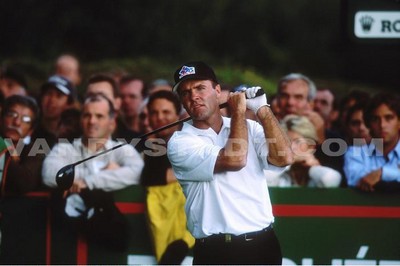
Warning! You have no right to play a provisional ball if your ball went into a water hazard.
If your ball is lost or "off limits", you'll get a penalty stroke and you must return to where you played your ball for the last time and put into play a second ball into the dropper (or placing on a T if it has been played departure).
Your score takes into account all the moves played with the first ball + all the moves played with the provisional ball + a penalty stroke.
Ball in a bunker or water hazard
What is prohibited is when your ball in a bunker?
You do not have the right to:
- Ask your club to the address on the sand,
- Touch or move garbage lying in the bunker (eg, leaves, etc..)
- Improve the position of your ball, for example by erasing footprints in the bunker, etc..
If you're one of those mistakes, you have 2 penalty strokes in stroke play and you lose the hole in part by holes.
What can you do when your ball is in a water hazard?
1. If your ball is playable (eg if there is little or no water), you can play it where it is as if she was in a bunker, that is to say, without affecting the address with the head of your club or the soil or water. Otherwise you will be penalized 2 strokes in stroke play and you lose the hole in part by holes.
If your ball is unplayable (too deep) or lost evidence in the obstacle (that is to say that you and your opponents have been falling in the water) you can drop a ball a penalty stroke.
2. Either behind the water hazard, leaving you and the hole point where the ball last crossed the edge of the water hazard. On this line and you can set the dropper as far back as you want.
3. Is as close as possible to the point where the first ball was played.
What can you do when your ball is in a lateral water hazard?
If your ball is playable, unplayable or lost evidence in a lateral water hazard, to continue to play you have five options:
- The three possibilities described above for a "water hazard" (1, 2 and 3),
- And drop a ball with a penalty stroke to the outside without the obstacle closer to the hole within 2 club lengths.
4. Let the point where the ball last crossed the edge of the obstacle.
5. Let the point on the opposite edge of the obstacle at an equal distance from the hole.
Ball unplayable due to a natural
(Example: ball against a tree or a bush, etc..).
If you deem your ball unplayable, you will need:
1. Either play your next shot as close as possible to where you played your last shot, with a penalty stroke. If your first ball was played from the start, you can place it on a tee, if you drop it.
2. Let your ball dropper with a penalty stroke:
- Within 2 club lengths from where your ball lies, but you closer to the hole
- Behind the point where your ball lay, keeping that point between you and the hole without limit rear.
In the case of these 2 options, if your ball is unplayable in a bunker, you must drop it in the bunker.
Ball unplayable due to obstruction
What is obstruction?
The whole thing artificially erected, constructed, placed or abandoned on the field, including artificial surfaces and sides of roads and paths.
For example: a rake, a bench, a bottle, a paved road, a roadside brick, etc..
By cons, are not obstructions:
- Anything that shows off limits (poles, fences ...)
- Batteries or bridges in a water hazard,
- The banks and beds of artificial water hazards.
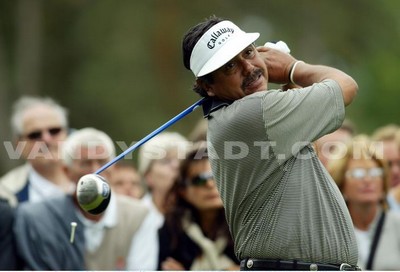
What to do when you're embarrassed by a "movable obstruction"?
You can move the obstruction. If in doing so, you move your ball, you must replace it without penalty, on the exact point where it was moved.
In what situation can you say that you're embarrassed? When your ball lies in or on the obstruction or is so close that you can not take your position or run your movement to play. By cons, if the immovable obstruction interferes only on your online gaming, there is no discomfort.
If you are bothered what can you do?
You can lift your ball and drop it without penalty within one club length from a point that we call "nearest point" and are determined as follows:
It is the nearest point from where your ball is and who:
- Is not nearer the hole than the point where your ball lies,
- Is not located on the other side of the obstruction in relation to where your ball is, except a highway or road artificial
- Is such that you're not bothered by obstruction to take your position and run your movement,
- Is neither a green nor a hindrance if your ball originally lay on the route.
If your ball was initially an obstacle, it will be dropped in the hazard.
The oldest course in Great Britain
Date Society
1735 Royal Burgess Golf Society
1744 Honorable Company of Edinburgh Golfers
1754 Royal & Ancient Golf Club of St Andrews
1761 Bruntsfield Links Golfing Society
1766 Royal Blackheath Golf Club
1774 Royal Musselburgh Golf Club
1780 Royal Aberdeen Golf Club
1786 Crail Golfing Society
1787 Glasgow Golf Club
1791 Burntisland Golf Club

The oldest golf course in Europe
1735. Royal Burgess Golfing Society SCO - 1764. Royal St Andrews - 1787. Royal Blackheath ENG - 1875. Pontnewydd GAL - 1879. Tipperary IRL - 1881. Royal Belfast IRL - 1888. Royal Antwerp BEL - 1898. Copenhagen DAN - 1889. Bad Homburg ALL - 1891. Las Palmas ESP - 1893. Haagsche HOL - 1898. Engadine SUI - 1902. SWE Gothenburg - 1903. The Circolo Golf di Roma ITA - 1922. POR Lisbon Sports Club - 1924. Oslo NOR
The first route to China "Mission Hills" was inaugurated in 1984 in Shenzhen. Today Mission Hills is the largest golf complex in the world had twelve courses, all designed by great champions (Jumbo Ozaki, Nick Faldo
, Greg Norman
, dares Maroa Olazabal, Annika Sorenstam), which are spread over 15 square kilometers. Every day they sell 3000 green fees. Six thousand people work there including 2,000 caddies. Mission Hills is also two five-star hotels, 51 tennis courts and a spa of 3000 m2.
Ball lying in an abnormal ground condition
What are the different fields in "abnormal condition"?
- Casual water: Water is fortuitous temporary accumulation of water that is visible before or after the player takes his position,
- Ground under repair: a "ground under repair" is any portion of land designated as such by order of the Committee. Such land is generally bounded by lines or blue stakes. In most cases, these parts of the land on which are carried out repair work or are in poor condition,
- Hole or rejection made by a burrowing animal: these holes, releases, tracks, made by a burrowing animal, a reptile or a bird (eg scrapers rabbit, the mole, etc..).
You're embarrassed if your ball lies in one of these situations or any of them bother you in your position or the performance of your movement.
If you're in that situation, you can either:
- Play your ball as it lies,
- Without penalty function as in the case of inconvenience by immovable obstruction, that is to say, determine the "nearest point" etc.. (see above).
The green
Addressing his ball on the green, you have the right to address your ball, without penalty, to clean it. To do this, you must meet before the mark position, preferably by putting on the green mark or other small object (like a room for example) just behind the ball.
Repairing the old holes and divots: you can fix the site of an old hole and the damage caused by the green impact of balls (pitches).
Key figures
- 5 minutes: the time allowed to find his ball.
- 40 seconds: the time limit available to a player to hit his mark.
- 42.67 mm: the minimum diameter bullets.
- 45.93 grams: the maximum weight of a bullet.
- 108 mm: diameter of a hole.
- 100 mm: the depth of a hole.
What is prohibited?
1. Touching the line of putt: Before playing, you're not allowed to touch the line of putt, that is to say that part of the green that is between your ball and the hole and immediately behind the hole on the same line (eg, smooth with your putter a small defect in the green or trademarks of nails).
There are some exceptions which are:
- Remove sand, loose dirt or debris, either by picking or by sweeping with the hand or the head of a club, but without hitting the ground
- Repair the old holes or divots on the green
- Measuring, with the flag, for example, what is the ball farthest from the hole.
2. Test the surface of the green: you have no right to test the surface of the green, rolling a ball or rubbing or scratching the surface.
3. Putter between the legs: you have no right to putt with your feet on both sides of the line of play or touching with one or both of your feet an extension of the online gaming behind the ball.
Penalty in these cases:
- Stroke Play: Two strokes;
- Partly by holes: loss of hole.
First ball on the moon!
On February 6, 1971, American Alan Sheppard hit the first ball on the moon with a 6 iron at the Apollo XI.
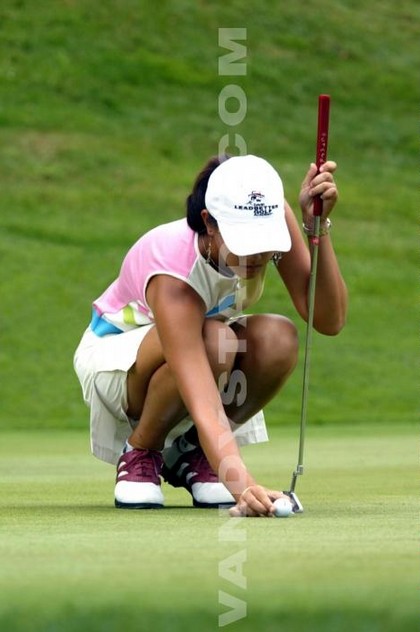
Some rules regarding the flag
Support the flag:
You can take over the flag from your younger, your partner, your opponent or marker. The support is to remove the flag from the hole when your ball is in motion.
The support of the flag can not be done without your agreement and it must be requested before playing.
Ball touching the flag or who has supported:
If your ball is on the green and that playing it affects:
- Either the flag is in the hole
- Is the flag that is supported by someone with your consent,
- The person who took over the flag with your agreement,
you will be penalized two strokes in stroke play competition or loss of hole by hole competition.
Ball resting against the flag
If your ball is resting against the flag when it is in the hole, you have the right to withdraw or to remove the flag. If your ball falls into the hole, you will be deemed to have entered your last shot. Otherwise, if it is moved, you should put on the edge of the hole without penalty.
Ball hit by an opponent:
If your ball is touched or moved by an opponent, his caddy or equipment, the opponent shall incur a penalty stroke and you need to replace your ball.
By cons, if it happens by looking up your ball, there is no penalty and you must replace your ball.
Disability
One of the most original features of golf is the existence of a handicap system which allows to organize games between players of different levels, while preserving the chances of success of each.
Disability is assessing the level of play of a golfer who used to balance the results in competitions between amateur players.
The term "margin of error" is also used to designate a handicap golfer.
The handicap is calculated by summing the ten lowest differentials between the account of the game and the evaluation of the course, among the twenty differences obtained during the last two rounds of golf.
The golfer whose handicap is 20 is allowed to play 20 additional blows by.
Scratch is equal to 0 handicap - a scratch golfer who is playing someone who plays by.
The reform of disability (FFG)
The new method of handicapping the European Golf Association was established in January 2000.
- A fairer system
In the past, assessing the level of play of a player and therefore the determination of disability shall absolutely not taking into account the relative difficulty of the course on which competitions were played. An injustice that prevented such accurately compare the level of two players from two different clubs. Two players with the same disability could therefore have levels of play significantly different.
With the new system and by calibrating hexagonal path that gives them two indices of difficulty (the Slope and Standard Scratch Score), this barrier disappears. Now the player does not keep longer as its reference index. It is used to determine from the Slope of the course (following markers selected initially) a handicap game to reality.
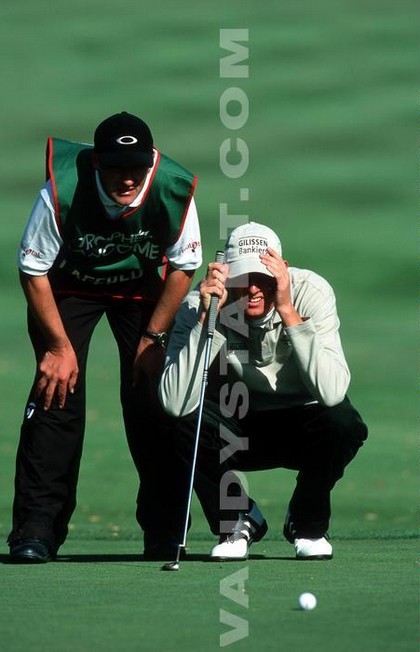
- A more tolerant
All forms of competition for cash management indexes are recorded in Stableford points. One important change that provides greater tolerance to future competitors. The terrible hole "disaster" which demobilized the player at the start of term is just a bad memory. And if an "accident" is always possible, the new system introduces a significant margin of maneuver as a "buffer" zone (between 1 and 5 points). Next level and hence its class, the player is no longer penalized in the case of a slight performance-cons.
- An international system
As its name implies, the method of handicapping is European.
- A broader system
Previously, the non-ranked player was assigned automatically handicap of 36 (with an index of 35.5). The new system has expanded the scope of non-ranked players: they are assigned an index of 53.5. At competitions, they can receive up to 3 strokes per hole, for a total maximum of 54 points.
- A more playful
The new system allows the player to choose his departure marks depending on their level of play A Slope below 113 indicates an easy ride and a Slope greater than 113, a difficult path (the value 113 indicates a term "neutral" ). Partly friendly, it is now possible to fairly measure his friend (s) or spouse (even if they have a level different from yours) departures from identical. Indeed, each player and each player now has a handicap game "as the benchmark chosen.
How it works
The method of disability is based on the assessment of the difficult terrain has developed the American Federation of Golf: The United States Golf Association (USGA), adopted and implemented since 1994 under the name "Calibration land ".
The USGA Course RAating Calibration System or land
The USGA Course Rating System allows you to objectively evaluate and formalize two values essential for this measure of difficulty (and therefore the management of index and handicap play) are: the Standard Scratch Score or SSS, corresponding to the difficulty of land for a player "scratch" (player "model" shadow forming on average by each hole) and the Slope, it corresponds to the difficulty "added" the same way for a player "bogey" (player "model" being fictitious average bogey on each hole).
The following elements are taken into account by the calibration procedure for the SSS and the Slope, hole by hole and mark by mark:
Actual length of play (taking into account: Roule, altitude difference, Dog-leg may be cut or kiss to remember because a major challenge to its fall, winds)
Topography of the hole (stanza flat or sloping)
Width of the fairway (and length of crossing to reach it)
Rough (distance from the reception area, height and difficulty of exit)
Off-Limits and Rough extreme (distance from the reception area)
Water hazards (distance from the reception area and distances to clear)
Trees (distance from the reception area and difficulty of exit)
Bunkers (distance from the reception area and depth)
Difficulty to reach the green (length of stroke in green / green surface)
Difficulty of the green surface (slopes, plateaus, speed)
Psychology (if several major difficulties are combined on the same hole).
- Evaluation of all these difficulties gives for each benchmark of land, the Standard Scratch Score or "SSS" and "Slope" means the value of the latter varying more frequently between 100 (easy route ) and 150 (route very difficult).
- The estimated level of play is the Index
- The index number is a decimal value is "portable" and "universal" comparisons between different players, regardless of the difficulty of the terrain they usually play.
- The value of Slope 113 is the reference called "neutral" because it is one to which all are brought Index.
The thoughts like "You're 12 handicap, but as you play usually very difficult terrain, in fact you are worth 9" have no justification.
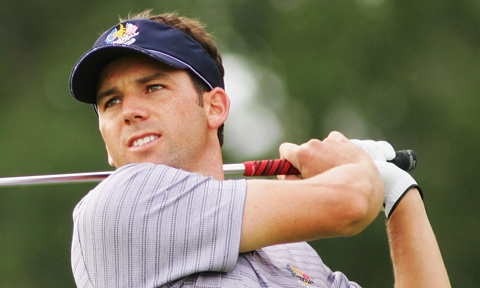
The Index is the only value that apparaîtdans histories. It serves as a reference to classify the players in different classes and series, and to determine the limits for enrollment in different competitions.
Each plot played, whatever the form of game and all competitions (or not counted for handicapping), and for friendly games, you turn, by the placemark Slope feedstock used (Rear or advanced Gentlemen, Ladies back or forward), your Handicap Index into play
Calculation of disability game based on the Index and the Slope
For a friendly game or for the purposes of competition, when one has to start, you need two pieces of information to calculate the handicap game:
The index of the player is given by consulting historical profile index,
The Slope of Land played for the marker in question, written on the scorecard and posted in Golf
Disability game is the result rounded to the formula: Index X Slope / 113
In fact, to avoid this calculation, a two-way table of Index and Slope located handicap game is available in all golf courses.
Scorecard
Example of a scorecard
1 2 3 4 5 6 7 8 9
Long 260 180 285 440 180 365 355 470 175
BY 4 3 4 5 3 4 4 5 3
Played 5 2 4 5 5 4 6 5 3
10 11 12 13 14 15 16 17 18
Long 491 276 369 435 152 421 308 19 467
BY 5 4 4 5 3 4 4 3 5
Played 6 2 4 2 1 5 3 3 5
Comments:
the player has made 2 times a "Birdie" is to say, one less than par (holes No. 2 and 16)
the player has made an "Eagle" is to say, two less than par (hole No. 11)
the player has made "a hole" that is to say in a coup (hole No. 14)
the player has achieved a "Albatros" is to say three strokes less than par (hole No. 13)
the player has made the "For", that is to say the number of strokes indicated on the scorecard (holes No. 3-4-6-8-9-12-17-18)
the player has achieved a "Bogey" is to say, one above the Par (holes No. 1-10-15)
the player has achieved a "double bogey" is to say two above by (holes No. 5-7).
The precursors of golf
Old Tom Morris (1821-1908) SCO. Figure legendary golf he was a pioneer as a player, architect and manufacturer of clubs and balls. He was a founder of the British Open finishing 2nd in the first edition back in 1860 Willie Park. Between 1860 and 1867 he won the event four times and was the oldest winner in 1867 at age 46. Old Tom died at St. Andrews where he was greenkeeper for many years. His portrait hangs in the clubhouse of the Royal and Ancient.
Young Tom Morris
(1851-1875) SCO. With Old Tom, his father, he marked the course English between 1850 and 1875 by placing his name on many tournaments. He won 4 British Open once, the first in 1868 at the age of 17. To date, there is always the youngest winner of this tournament history.
Willie Park Senior
(1834-1903) SCO. Born into an illustrious family of golfers (and making clubs and balls), his golf games with Old Tom Morris, Willie Dunn and Allan Robertson
remains in the memory of all. First winner of the British Open in 1860, he won three times in 1863, 1866 and 1875 (4 times 2nd). His brother, Mungo (1835-1904) wrote his name in the charts in 1874, while his son Willie Junior (1864-1925) won the race in 1887 and 1889.
Willie Park Junior (1864-1925) SCO. One of the pioneers of golf (he published 'The Game of Golf' in 1886), it was a worthy successor to his father. He won the British Open twice (1887 and 1889). It was primarily a legendary architect, one of the first to build the campaign trail instead of those edges is shining sea is some 170 courses in the USA, Canada or Europe where the route of Sunningdale.

The label
Respect for others and the environment
The label is also:
Coming out of a bunker raking his footsteps
Respect the silence of the trail
Repair ball marks on greens
Do not climb the mound of a bunker
In seeking his ball, let those who wait
Keeping his distance from party
Replace its turf torn
Do not play slowly
"Less than 2 hours for 9 holes, less than 4 hours for 18 holes"
The world record for the longest drive since 1974 belongs to Mike Austin (1910-2005), renowned golf professional (among its illustrious students included Howard Hughes, Bing Crosby). He managed to hit 515 yards with an iron ball Balatti at the U.S. National Senior Open in Las Vegas. Davis Love III is the second best hitter in the world with a drive 476 yards in 2004.
Glossary
Albatross: score of 3 strokes under par
Approach: shot for a short distance to reach the green and put his ball closest to the flag.
Birdie: score of 1 stroke under par.
Do you think the word 'Birdie' was created in 1898 when the American Ab Smith of Atllantic Club in New Jersey, saw his partner get a perfect shot 1-for-under par, exclaimed 'Bird of a shot '.
Bogey: score higher by a blow to; double bogey: + 2; triple bogey: + 3, etc..
Bunker: obstacle in depression, covered with sand and situated on the route or near the greens.
Cadet, cart or caddy: a person who carries or handles a player's clubs during play When younger is used by more than one player, it is still considered the youngest player whose ball is question.
Club: cane used to send / hit the ball to move. The clubs have heads made of wood, iron, composites, and different angles to achieve the appropriate distance shots desired. There are three families of clubs: irons, woods and putters.
Divot: tuft of grass removed by a stroke club.
Dogleg: hole turns right or left.
Drive: the first shot on a long hole, hit a driver.
Casual water: Any temporary accumulation of water on the ground visible before or after the player took his stance, and not in a water hazard.
Eagle score 2 strokes under par.
Fairway: Part of the trail mowed between the departure and the hole.
Green: Part of the land mowed ras, surrounding the hole, and marked by a flag.
Hook: effect given to the ball giving it a path right to left.
Intervention fortuitous fortuitous intervention ago when a ball in motion is deflected or stopped by any foreign element to the game.
By: reference score for each hole set depending on its length. There are "by" 3, 4 and 5. On a par 3, the starting hole distance not exceeding 228 m - on a par 4, between 228 and 434 m - on a par 5, exceeds 434 m.
Play-off: extended play on one or several holes in a tie at the end of the 4 courses of 18 holes.
Putt: putt, hit with a putter, played on the green.
Putter: rolling his ball on the green with a club named "Putter" to put it in the hole.
Rough: part of land not mowed, located around the Fairway or course.
Slice: effect given to the ball that gives a path from left to right.
Stance: take his stance is for a player to place his feet in position preparatory to execute a coup.
T: small medium wood or plastic used to start each hole to elevate the ball. Also refers to the tee of each hole.
Wedge: Club open for very high shots (pitching wedge) or the output into a bunker (sand wedge).
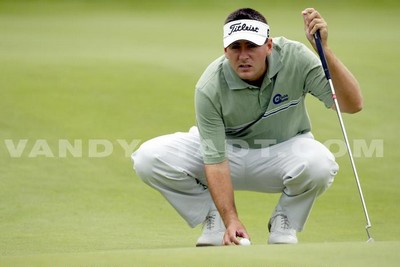
Some definitions
Simple: a game in which a player plays against another player.
Threesome: A game in which a player plays against 2 other players, each side playing one ball.
Foursome: A game in which 2 players play against 2 other players, each side playing one ball alternately until the hole.
Three balls: a competition in match play in which 3 players play against each other, each playing his own ball. Each player plays two separate matches.
A best ball match in which a player plays against the best ball of 2 or 3 best ball players.
A four-ball (fourballs): A game in which 2 players play their better ball against the better ball of 2 other players.
Addressing the ball: a player has "addressed the ball" when he took his stance and has also put his club on the ground. By cons, in a hazard a player has addressed the ball when he took his position to prepare to hit the ball.
Ball moved a ball is moved if it leaves its position and stopped at any other place.
Bullet entering a ball when it came to rest within the circumference of the hole and it is entirely below the edge of the hole.
Lost Ball: A ball is lost if it was not found or identified by the player as his, less than five minutes after the camp the player or his or younger, have begun to search. If the player has put another ball into play by the rules, even if he did not seek the original ball or if the player played a stroke with a provisional ball from the spot where the ball likely origin.
Bunker: A bunker is an obstacle consisting of a prepared surface, often in hollow area where the grass or dirt have been removed and replaced with sand or similar material. The grassy area adjacent to or located within a bunker is not part of it.
Penalty stroke: a stroke that is added, under certain rules to the score of a player or a camp.
Detritus: natural objects that are not fixed to the ground, do not grow and do not adhere to the ball leaves, branches, dung or stones.
Foreign element: a "foreign element" is any element not part of the con-hole courses, or by competition once outside the camp of a player. The referee, the scorer, the commissioner or the younger scouts are foreign elements.
Grip: handle or sheath that covers the upper pole and which ensures the plug. Also: hand position on the handle of the cane.
Handicap: number of strokes that the player is allowed to subtract from his income to adjust his score to the player without a margin of error. The margin of error or disability of course is based on the average of the ten best parties among the last 20 completed.
Honor: the side that has the right to play the first since the departure area is said "to have honor."
Out of bounds: a territory where gambling is prohibited. A player may be held by cons out of bounds to play a ball lying within bounds. When out of bounds is defined by a line drawn on the ground, the line itself is out of bounds.
Online play: Online play is the direction the player wishes his ball to take after a stroke, plus a reasonable distance from each side of the intentional direction. It extends vertically upward from the ground, but does not extend beyond the hole.
Line of putt: the line of putt is the line that the player wishes to take his ball after a shot played from the green.
Barrier: a "barrier" is any bunker or water hazard.
Water hazard: a "water hazard" is any sea, lake, pond, stream, drainage ditch or other watercourse open (whether or not containing water), and everything which is similar. Any land or water located in the outskirts of a water hazard is part of the water hazard. The edge of a water hazard is deemed to be continuing vertically upwards. The stakes and lines defining the edges of water hazards are in the barrier.
Note: the water obstacles (other than lateral water hazards) are defined by yellow stakes or lines.
Lateral water hazard: a "lateral water hazard is a water hazard or that part of a water hazard so situated that it is impossible or considered as such by the Committee, to drop a ball behind the water hazard, leaving between the player and the hole, the point where the ball last crossed the edge of the water hazard. If part of a water hazard must be performed in lateral water hazard, it will be clearly delineated.
Note: Lateral water hazards are defined by red stakes or lines.
Obstruction: everything is artificial (including the edges of roads and footpaths) except all that determines the off-limits as walls, poles, fences, etc..
Pro-Am: a competition which is played at 4 with the presence of a professional partner for amateurs.
Scramble: a team of 4, we choose the best drive of 4 and 4 restart of this place and so on.
Simple: a duel between a player from each team.
Stableford: Points are assigned to the score of each hole. An eagle is worth 4 points, a birdie 3, para 2 and a bogey point.
Stroke Play: some by blows. We play the holes of the course in as few strokes as possible.
Hole: the hole must be 108 mm in diameter and at least 100 mm deep.
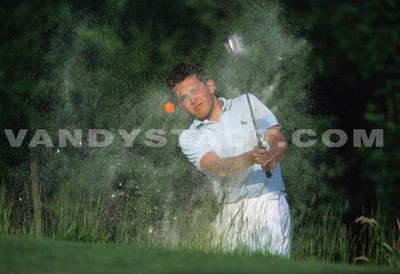
The world record for the longest drive since 1974 belongs to Mike Austin (1910-2005), renowned golf professional (among its illustrious students included Howard Hughes, Bing Crosby). He managed to hit 515 yards with an iron and Balatti ball at the U.S. National Senior Open in Las Vegas. Davis Love III
is the second best hitter in the world with a drive 476 yards in 2004.
Copyright Sportquick/Promedi








.jpeg)
